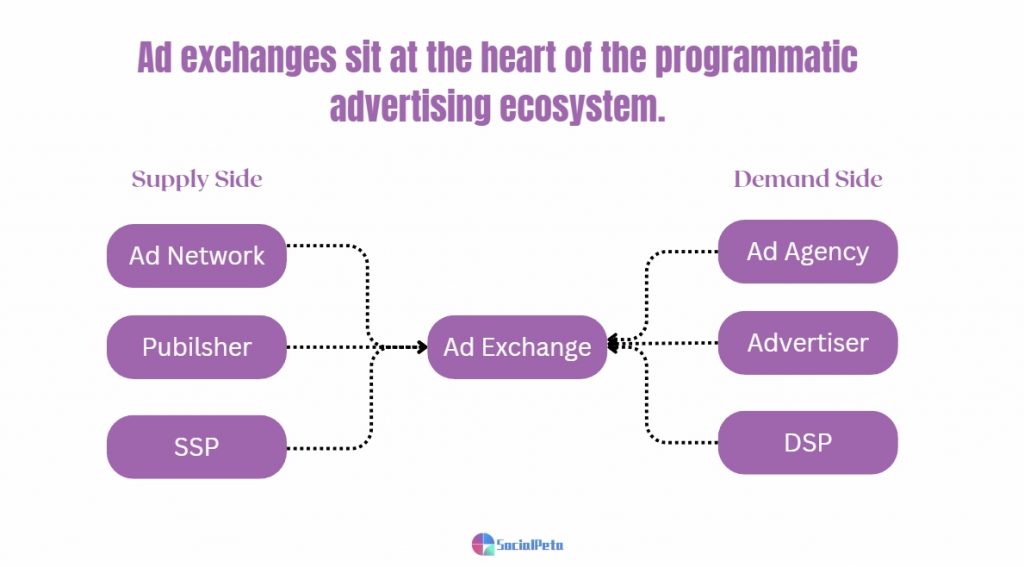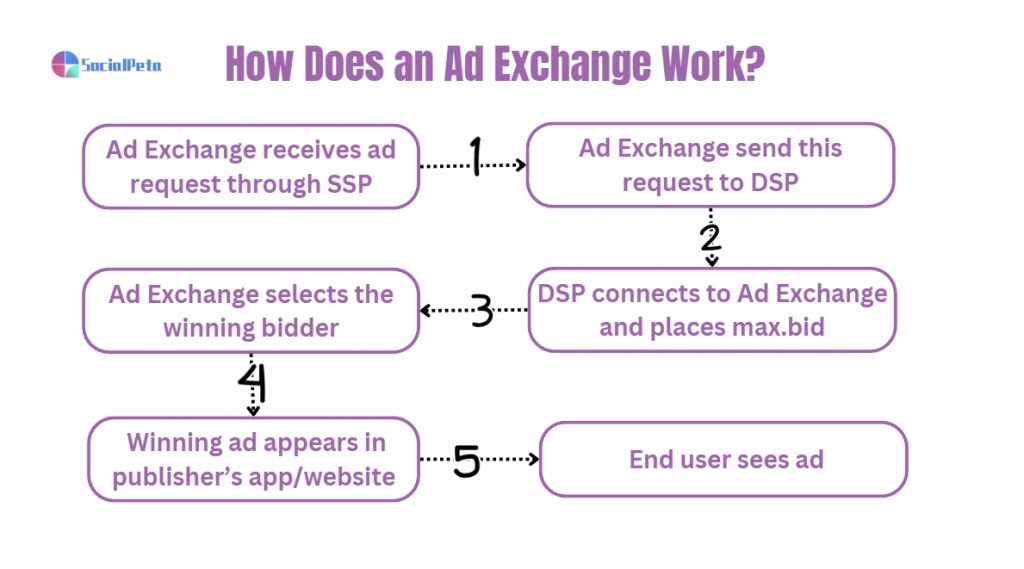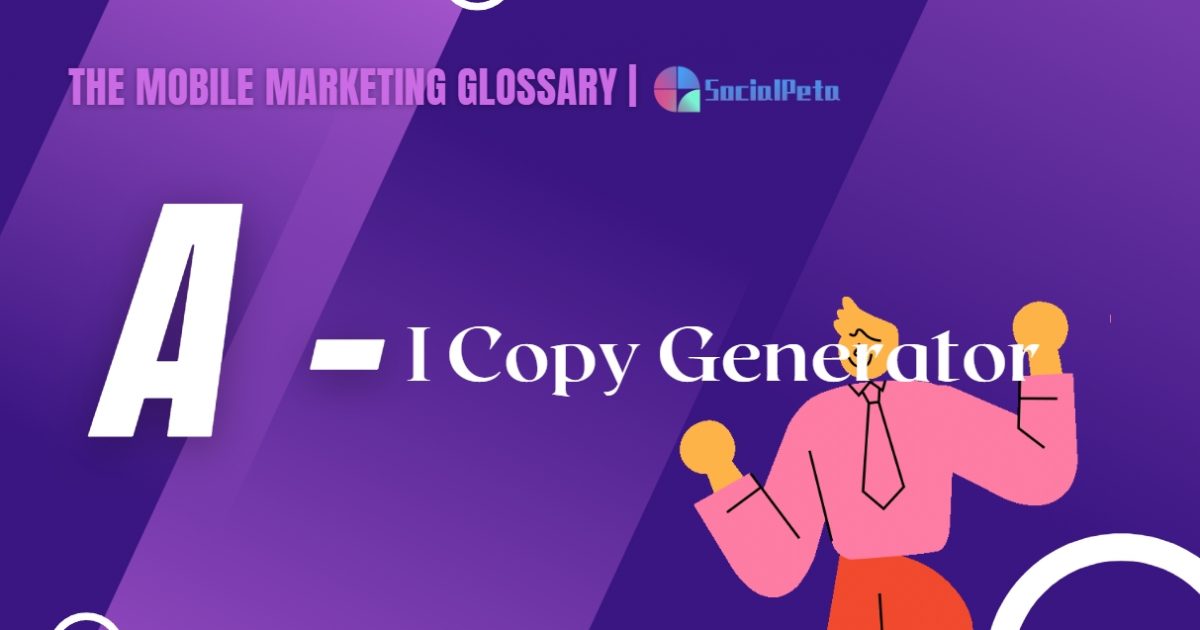What is Ads Exchange (ADX)?
Ads Exchange, a pivotal element in modern marketing strategies, serves as a dynamic platform for buying and selling ad inventory across various digital channels. It facilitates advertisers and publishers to interact and transact ad spaces programmatically, optimizing campaigns for maximum reach and effectiveness.
Ads Exchange Meaning
An ads exchange, often abbreviated as ADX, represents an online marketplace where advertisers and publishers trade ad inventory in real-time, leveraging automated technologies for transactions. It's a platform fostering the buying and selling of ad spaces, optimizing placements based on audience targeting, data analysis, and bidding algorithms. This system operates in milliseconds, allowing for instantaneous auctions and ad placements across diverse digital mediums.

How Does Ad Exchange Work?
Ads exchanges function as intermediaries connecting publishers and advertisers. When a user visits a website or app integrated with an exchange, the exchange conducts an auction, assessing available ad slots based on user data, relevance, and bidding strategies. Advertisers bid on these slots in real-time, with the highest bidder securing the ad placement, which then displays instantaneously to the user.

What are the Different Types of Ad Exchange?
There exist different types of ads exchanges, each with unique features.
- Open ad exchanges operate openly, allowing any advertiser or publisher to participate.
- Private Marketplaces (PMPs) maintain a controlled environment, granting selected advertisers access to premium inventory.
- Preferred deals involve pre-negotiated terms between publishers and advertisers.
Understanding these distinctions is crucial in optimizing ad strategies for specific objectives and target audiences.
Who Benefits from Ads Exchanges?
The utilization of Ads Exchanges offers a multitude of benefits. Advertisers gain access to a vast pool of ad inventory, allowing for precise targeting, real-time analytics, and budget optimization. Publishers, on the other hand, can monetize their ad spaces efficiently, attracting relevant ads and maximizing revenue. This symbiotic relationship facilitated by Ads Exchanges results in a win-win scenario for both parties involved.
Ad Exchange Companies
The Ads Exchange landscape boasts a plethora of companies contributing significantly to its growth. These companies, such as Google AdX, OpenX, Rubicon Project, and AppNexus, play pivotal roles in shaping the digital advertising ecosystem.
Google AdX, renowned for its extensive reach and robust technology, dominates a significant portion of the market. Meanwhile, OpenX emphasizes transparency and high-quality inventory. Rubicon Project specializes in programmatic advertising solutions, whereas AppNexus focuses on advanced programmatic buying and selling tools.
Each entity brings unique features, technological advancements, and expansive networks to the table, catering to the diverse needs of advertisers and publishers worldwide.
Spy on Top Ads, For Your Apps
Register For Free DemoFAQs:
Ad Exchange and Ad Network
Ad Exchanges and Ad Networks are often perceived interchangeably, but they serve distinct purposes in the advertising ecosystem. While Ad Exchanges focus on real-time bidding for ad spaces, Ad Networks function as intermediaries that aggregate ad inventory from multiple publishers. Understanding these nuances is crucial for advertisers and publishers to make informed decisions about their advertising strategies and investments.
Ad exchange vs. supply-side platform (SSP)
Supply-Side Platforms (SSPs) complement Ads Exchanges by enabling publishers to manage and optimize their ad inventory. SSPs empower publishers to control the sale of their ad spaces in real-time auctions, ensuring maximum revenue generation. The collaboration between Ads Exchanges and SSPs streamlines the advertising process, benefitting both advertisers and publishers by enhancing efficiency and revenue potential.


